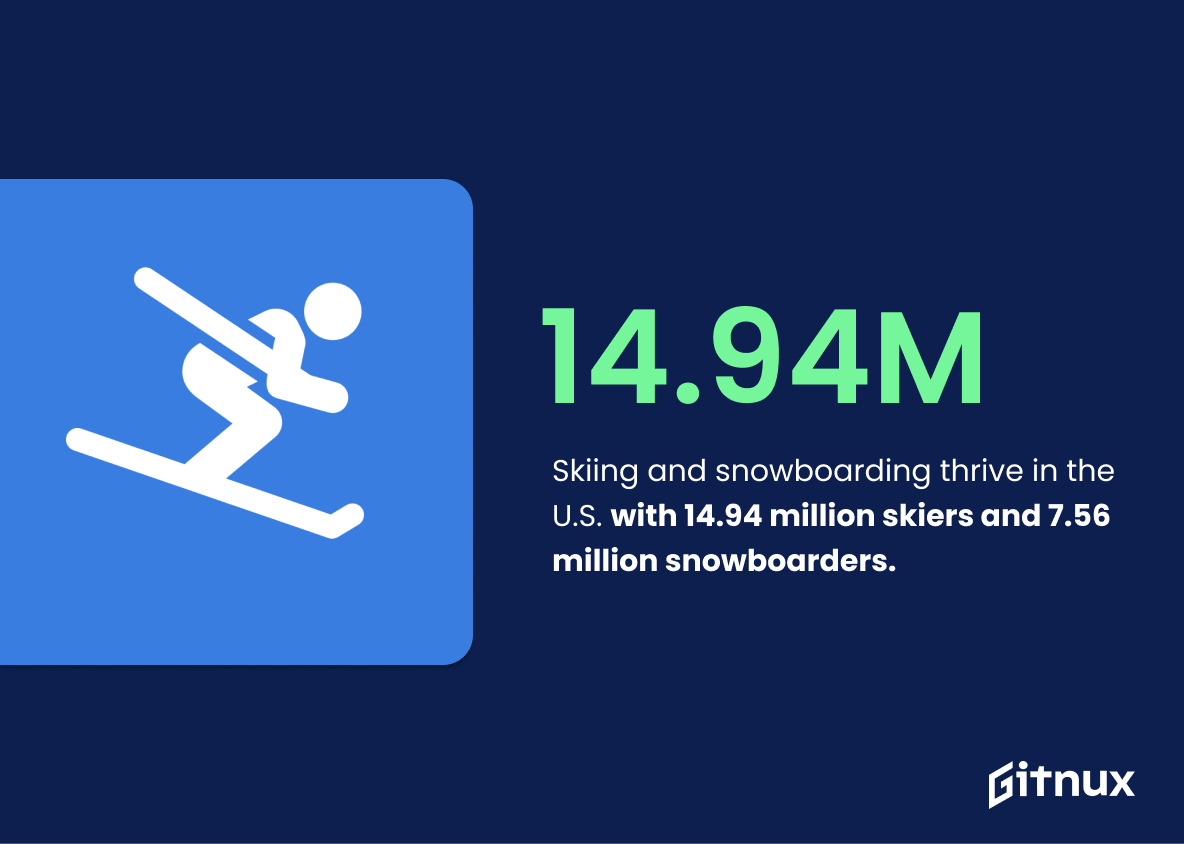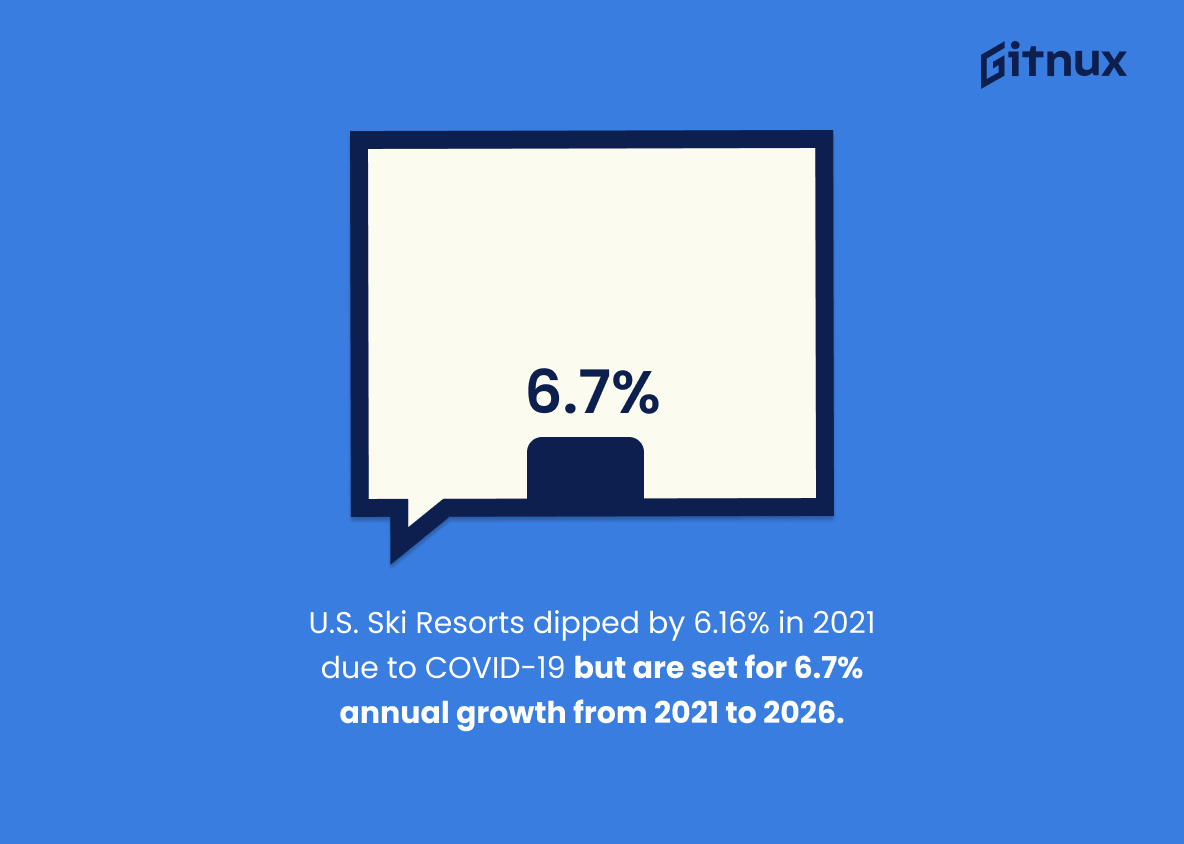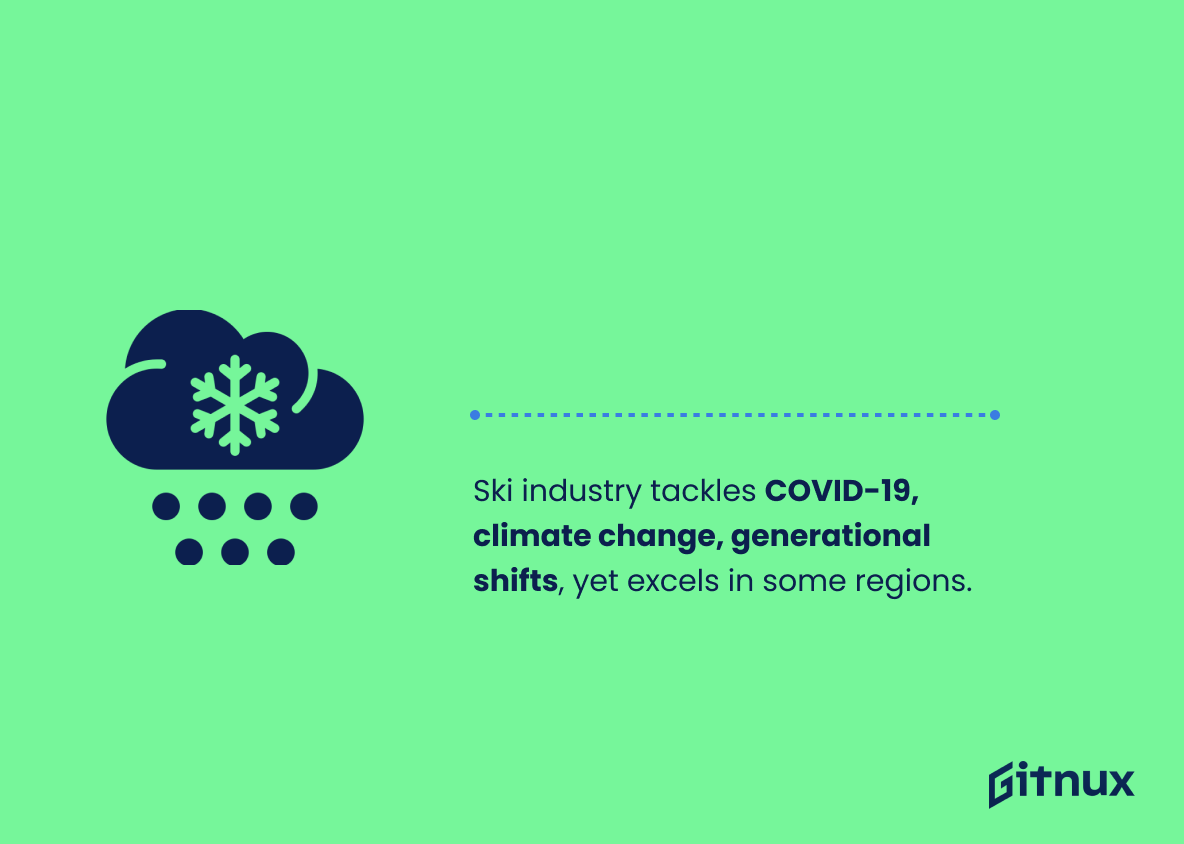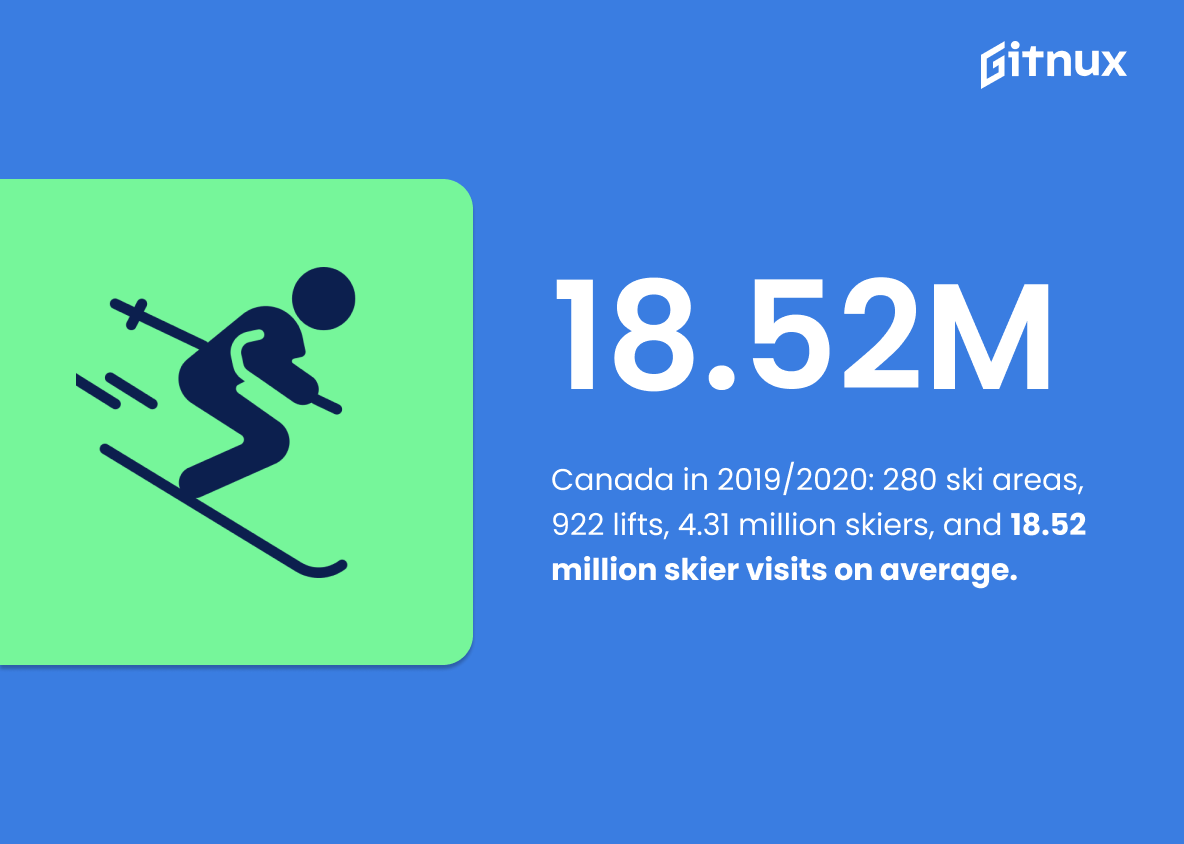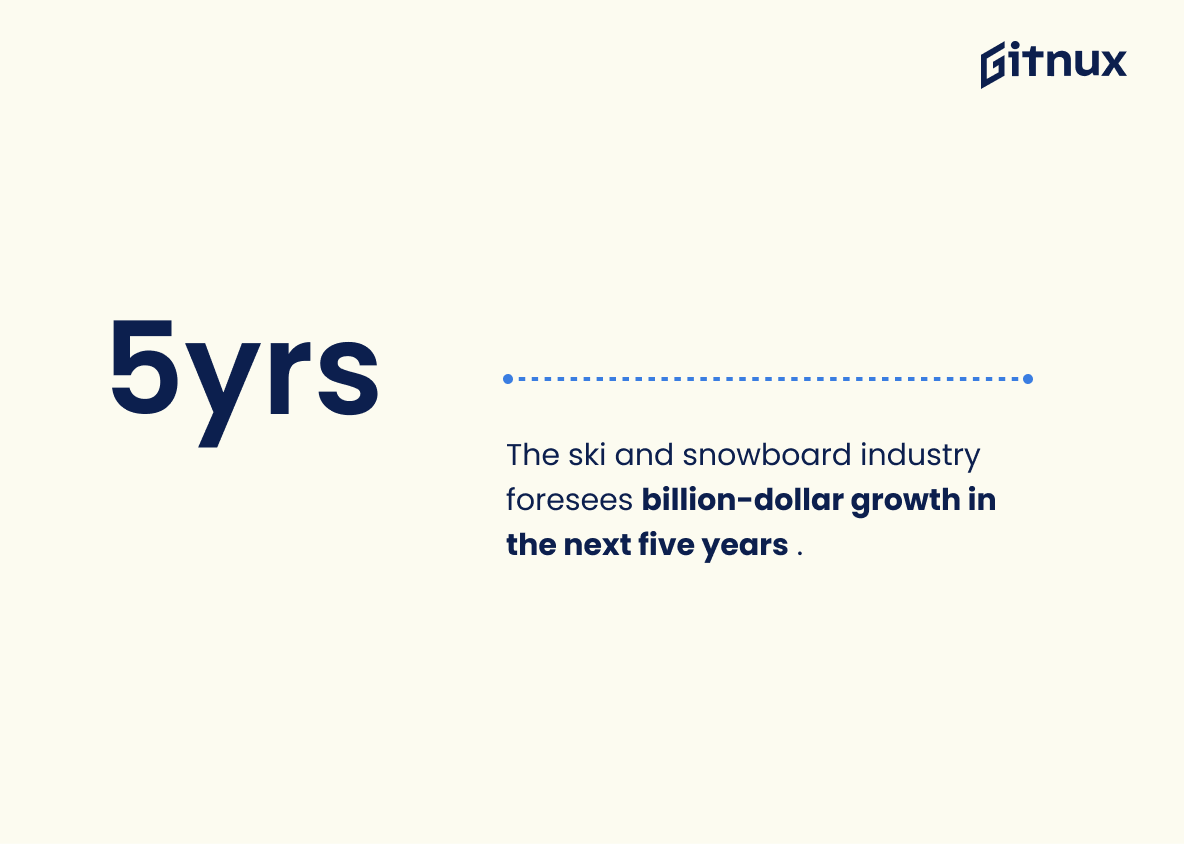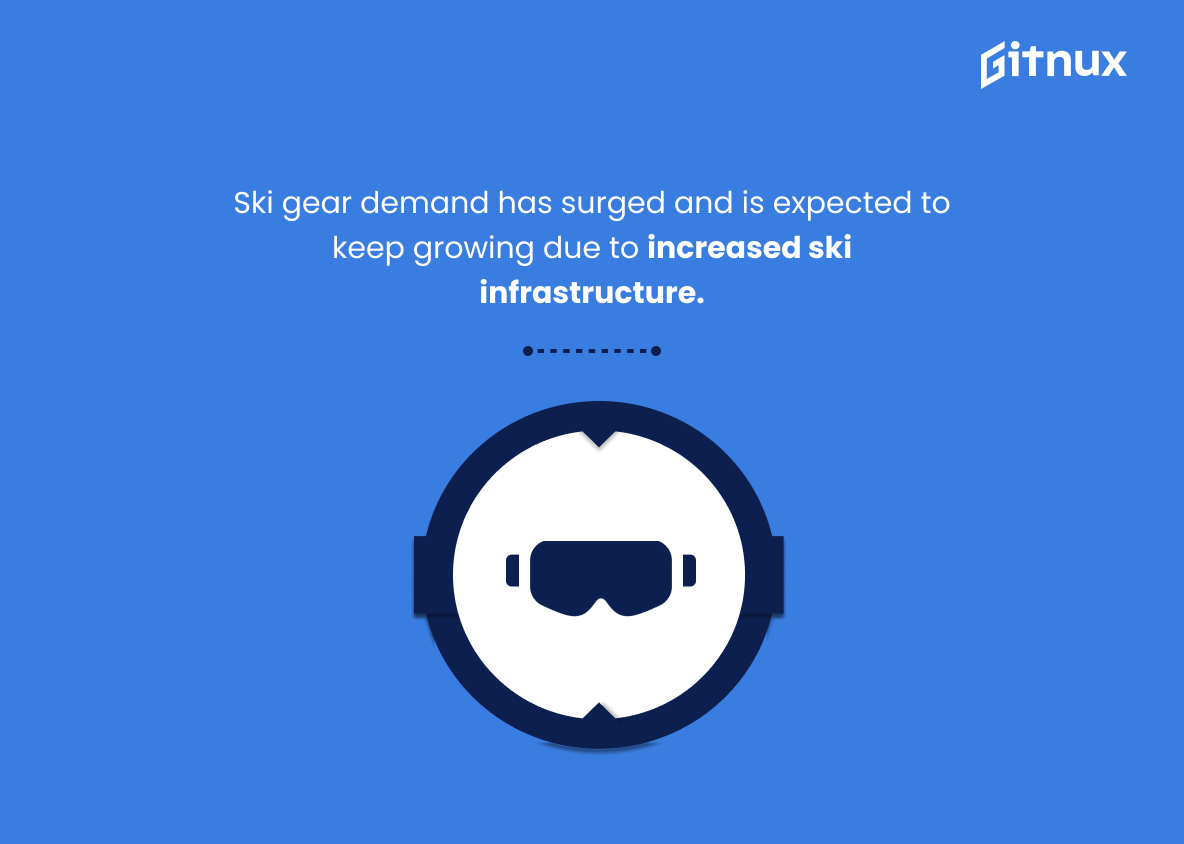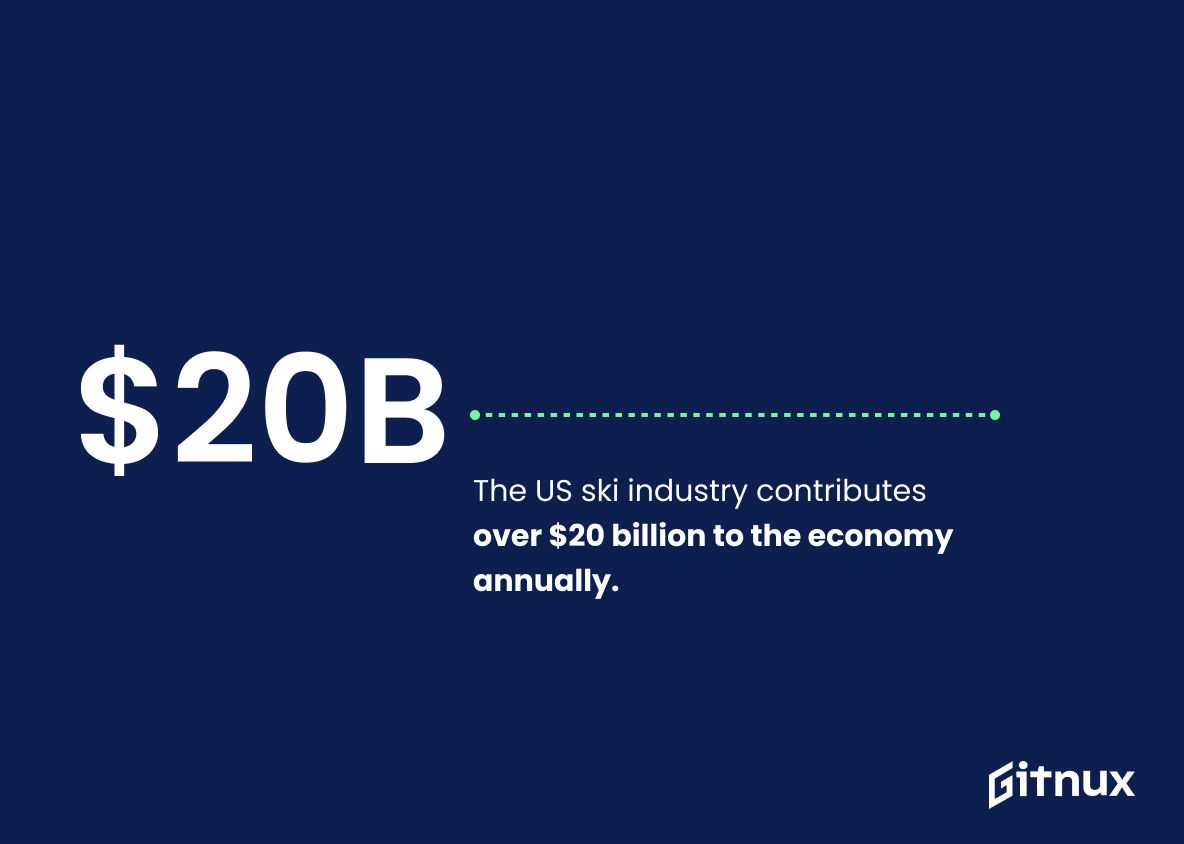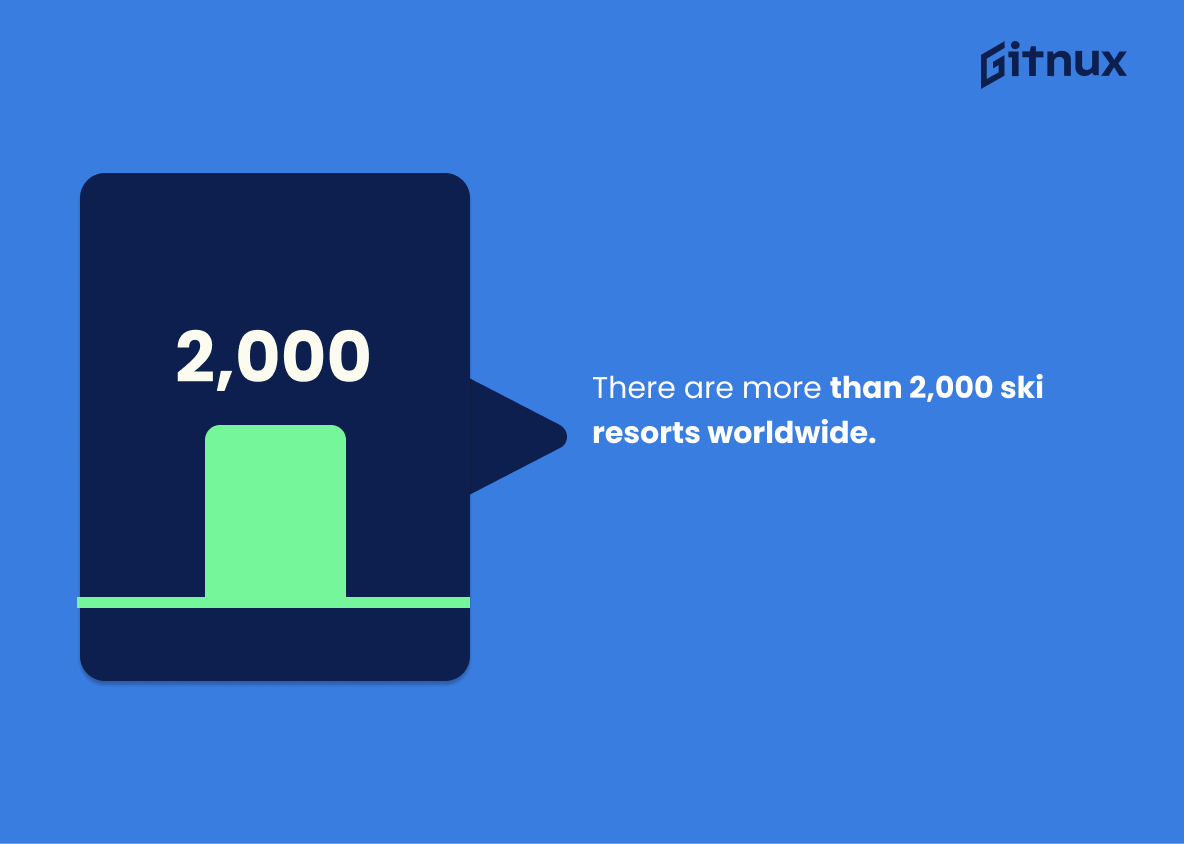Welcome to our blog post about the ski industry. We’ll be taking a look at some of the most interesting statistics about the ski industry, from the number of ski resorts around the world to the amount of money spent on ski equipment each year.
We’ll also be exploring the impact of climate change on the ski industry, and how the industry is adapting to a changing climate. Finally, we’ll be discussing some of the most popular ski destinations and the economic benefits that skiing brings to these areas. So grab your skis and let’s dive into the world of ski industry statistics.
Ski Industry: The Most Important Statistics
Germany has the most skiers in Europe with 14.6 million, followed by France and the UK, while Switzerland has the highest share of population skiing at 37%.
The U.S. Ski and Snowboard Resort industry saw a 6.16% decrease in revenue in 2021 due to the COVID-19 pandemic, but is expected to see annual revenue growth of 6.7% in the years 2021-26.
Ski Industry Statistics Overview
Skiing and snowboarding are popular winter sports in the United States, with 14.94 million skiers and 7.56 million snowboarders.
Thus, there is a large number of people interested in skiing and snowboarding, which is important for ski resorts to consider when planning their operations.
Additionally, the statistic highlights the importance of the state of New York, which has the highest number of ski areas in the country. This is important for ski resorts to consider when deciding where to locate their operations.
The ski industry is facing challenges due to the COVID-19 pandemic, global warming, and the need to attract new generations, but is still experiencing remarkable growth in some regions.
This shows that the industry is resilient and can find ways to create new growth, despite the obstacles it is facing.
Germany has the most skiers in Europe with 14.6 million, followed by France and the UK, while Switzerland has the highest share of population skiing at 37%.
Germany also has the most ski areas at 498, with Italy, France, and Russia following. The largest ski resorts in Europe are in Italy, Switzerland, and Switzerland.
Knowing this information can help ski resorts in other countries to improve their services and attract more skiers.
Germany had the highest number of skiing participants in Europe in 2021, with 36% of Liechtenstein and Austria’s population participating in the sport and 43% of ski resorts located in the Alps.
This provides insight into the popularity of skiing in Europe and which countries are the most important for the ski industry. It also shows which areas have the most ski resorts, which is important for ski resort owners and operators.
Canada had 280 ski areas and 922 lifts in the 2019/2020 winter season, with 4.31 million national skiers and an average of 18.52 million skier visits.
This shows that the ski industry is growing, with more ski areas and lifts being added each year and more skiers visiting the country. It also indicates that the ski industry is an important part of the Canadian economy, and that it is a popular destination for winter sports enthusiasts.
The Canadian Ski and Snowboard Resorts industry has seen growth due to rising per capita disposable income and inbound international travel over the past five years. This growth is largely due to an increase in the number of households earning more than $100,000.
On this, we can see that the industry is doing well due to increased discretionary spending and leisure activities, which are largely determined by the amount of money and time individuals have available.
The ski and snowboard industry is expected to benefit from increased travel and investments in technological advancements, resulting in revenue growth of billions over the next five years.
Therefore, the industry is set to recover from the pandemic-induced lows and that investments in technology will help attract new visitors and contribute to revenue gains.
The ski industry is a powerful economic force, worth billions of dollars in revenue and tourism, but the pandemic has had a noticeable toll on the thousands of seasonal workers who rely on it every year.
Ski villages and surrounding cities have grown to rely on the tourism that ski resorts command year after year, and without this revenue and heavy tourist presence, there are harsh economic impacts.
Ski gear and equipment demand has increased exponentially due to high demand, which is expected to continue due to ski infrastructure.
The global ski gear and equipment market is expected to register a CAGR of 3.7% during the forecast period, segmented by product type, distribution channels, and geography.
The U.S. Ski and Snowboard Resort industry saw a 6.16% decrease in revenue in 2021 due to the COVID-19 pandemic, but is expected to see annual revenue growth of 6.7% in the years 2021-26.
This shows the potential for growth in the industry despite the pandemic, and highlights the importance of external factors such as travel and per capita disposable income in driving growth. It also emphasizes the importance of low temperatures and high amounts of precipitation in the success of the industry.
In 2022, the market size of the ski and snowboard resorts industry in the United States was 4.28 billion U.S. dollars, showing that skiing and snowboarding are popular winter activities in the U.S.
Supplementary Statistics
The global ski industry is worth an estimated $69.91 billion (2020)
This serves as a reminder of the immense economic impact the ski industry has on the world, and the importance of understanding the industry’s trends and developments. It is a powerful reminder of the importance of the ski industry and its potential for growth.
The US ski industry contributes over $20 billion to the economy annually.
It highlights the significance of the industry in terms of its contribution to the overall economy, and serves as a reminder of the importance of the ski industry in the US.
There are more than 2,000 ski resorts worldwide
This speaks to the immense popularity of skiing as a recreational activity, and the vast number of resorts that have been established to meet the demand. It also highlights the potential for growth in the industry, as there is still plenty of room for more resorts to be built.
European ski resorts hosted 44% of worldwide skier visits in the 2018/19 season
It demonstrates the immense draw of European ski resorts, with almost half of all skier visits taking place in Europe. This statistic is an important indicator of the success of the ski industry in Europe and provides a valuable insight into the industry as a whole.
The United States had 51.59 million skier visits in the 2020/2021 season
Despite the challenges posed by the pandemic, the number of skier visits in the 2020/2021 season was still impressive, indicating that skiing remains a beloved pastime for many Americans.
France is the most popular destination for skiing, with over 57 million skier days (2019/2020)
This statistic speaks to the country’s commitment to providing a world-class skiing experience, and is a testament to the success of the ski industry in France.
The global ski and snowboard equipment market was valued at $1.88 billion in 2019
The ski industry is a lucrative and profitable venture, and that there is a large demand for ski and snowboard equipment. This statistic is an important indicator of the health of the ski industry, and provides valuable insight into the industry’s current state.
Nearly 10% of the US population participated in skiing and snowboarding in 2019
There is a large base of people who are interested in skiing and snowboarding, and that the ski industry has the potential to reach even more people. This statistic is an important indicator of the potential for the ski industry to expand and grow.
An estimated 67% of skiers and snowboarders in the US are male
It highlights the need for more initiatives to encourage female participation in the sport, as well as the need for more gender-inclusive marketing and advertising strategies.
Skiers participating in alpine skiing represent 83% of the market demand in ski resorts
This demonstrates the potential for ski resorts to capitalize on the popularity of alpine skiing by investing in more alpine skiing-related activities and amenities. Furthermore, this statistic can be used to inform ski resort marketing strategies, as it provides insight into the preferences of ski resort customers.
Snowmaking investments in ski resorts account for approximately 14% of total investments globally
Ski resorts are investing heavily in snowmaking technology, which is essential for providing a quality skiing experience. This statistic is a reminder that ski resorts are taking the necessary steps to ensure that their customers have the best possible experience on the slopes.
The global ski equipment market is expected to grow at a compound annual growth rate (CAGR) of 1.47% from 2020 to 2025
It is an important piece of information for anyone interested in the ski industry, as it can help them make informed decisions about investments, marketing strategies, and other business decisions. Furthermore, it can help readers of the blog post gain a better understanding of the current state of the ski industry and its potential for growth.
Ski and snowboard schools generate about $830 million annually in the United States
This highlights the importance of these schools in providing jobs and generating revenue for the ski industry. It also serves as a reminder of the importance of investing in ski and snowboard education, as it can have a significant positive effect on the economy.
The ski tourism market is expected to reach $77.40 billion by 2027, growing at a CAGR of 3.9%
With a projected CAGR of 3.9%, this statistic is a clear indication that the ski industry is a lucrative and promising sector for investment. As such, it is an important piece of information for anyone interested in the ski industry and its future prospects.
Whistler Blackcomb in British Columbia, Canada, is the largest ski resort in North America, with 8,171 acres of skiable terrain
This is a testament to the sheer size and scope of the ski industry in North America, with Whistler Blackcomb in British Columbia, Canada, standing as a shining example of the potential for ski resorts to offer an expansive and varied experience. It is a reminder of the vastness of the ski industry and the opportunities it provides for skiers and snowboarders alike.
Austria is the nation with the most ski resorts, with approximately 420 ski resorts
With over 420 ski resorts, Austria is a premier destination for skiing and snowboarding, and its ski industry is a major contributor to the country’s economy.
The average ski lift ticket price in the United States is $94
It provides insight into the cost of skiing, which can be a major factor in determining the popularity of the sport. Additionally, it can be used to compare the cost of skiing in the United States to other countries, helping to identify potential areas of growth or decline in the industry.
Ski resort visitors spend an additional $5.5 billion on miscellaneous items, such as food, lodging, and equipment rental
The $5.5 billion spent on miscellaneous items is a clear indication of the financial success of ski resorts, and the potential for further growth in the industry.
In 2017, Stevens Pass ski resort in Washington State saved 28% of their energy consumption by upgrading to an energy-efficient snowmaking system
By upgrading to an energy-efficient snowmaking system, Stevens Pass ski resort was able to reduce their energy consumption by 28%, demonstrating the potential for other ski resorts to make similar changes and reduce their energy costs.
Ski holidays are responsible for 0.01% of global carbon emissions
It serves as a reminder that, while skiing is a fun and exciting activity, it is important to be mindful of the environmental consequences of our actions. This statistic is a call to action for the ski industry to take steps to reduce their carbon emissions and become more sustainable.
Conclusion
In conclusion, the ski industry is a booming business that has seen significant growth in recent years. With the rise of winter sports and the increased popularity of skiing, the ski industry has seen a steady rise in revenue and profits.
With the right marketing and promotional strategies, the ski industry can continue to grow and thrive in the years to come.
References
1 – https://www.statista.com/topics/1770/winter-sports/
2 – https://www.rentle.io/blog/rental-business/skiing-market-stats#:~:text=The%20ski%20and%20snowboard%20industry,to%20the%20COVID%2D19%20pandemic.
3 – https://www.statista.com/topics/3922/skiing-in-europe/
4 – https://www.statista.com/statistics/801008/europe-number-of-people-skiing-by-country/
5 – https://www.statista.com/statistics/1332932/key-data-ski-tourism-canada/#:~:text=In%20the%202019%2F2020%20winter,18.52%20million%20in%202019%2F2020.
6 – https://www.ibisworld.com/canada/market-research-reports/ski-snowboard-resorts-industry/
7 – https://www.ibisworld.com/united-states/market-research-reports/ski-snowboard-resorts-industry/
8 – https://newtoski.com/how-much-is-the-ski-industry-worth/
9 – https://www.alliedmarketresearch.com/ski-gear-and-equipment-market-A11985
10 – https://www.mordorintelligence.com/industry-reports/ski-gear-and-equipment-market
11 – https://business.uoregon.edu/files/media/ski-snowboard-resort-industry-report.pdf
12 – https://www.statista.com/statistics/1175393/ski-snowboard-resorts-market-size/
13 – https://www.globenewswire.com
14 – https://www.forbes.com
15 – https://www.statista.com
16 – https://www.marketdataforecast.com
17 – https://www.focus-economics.com
18 – https://www.telegraph.co.uk
19 – https://www.ncbi.nlm.nih.gov
20 – https://www.ibisworld.com
21 – https://www.skidata.com
22 – https://snowbrains.com
23 – https://www.nsaa.org
